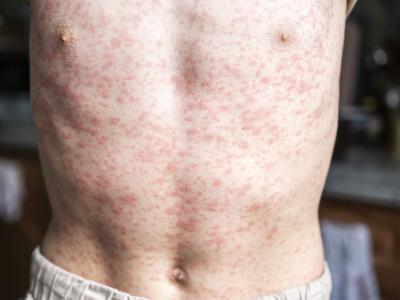Apr 18, 2013 (CIDRAP News) – Three provinces of China and the city of Shanghai reported five more H7N9 influenza infections today, as researchers in Europe shared more clues about the behavior of the novel virus and the best way to detect it.
The World Health Organization (WHO) said today that four of the new lab-confirmed cases are from eastern China, where most cases have been reported, and the fifth is from central China's Henan province, which reported its first cases on Apr 14. The new cases move the outbreak total to 87 infections, 17 of which have been fatal. The total does not include an asymptomatic case from Beijing.
An update from Hong Kong's Centre for Health Protection (CHP) included a few details about the patients.
The patient from Henan province is a 38-year-old man who is in serious condition. Media reports in Chinese on the man's infection said he is a poultry processor and trader who got sick on Apr 8 and was seen at a clinic and then a hospital emergency department.
He was diagnosed as having pneumonia on Apr 11 when his samples tested negative for the virus, according to a former resident of China who monitors the Chinese media for H7N9 reports for CIDRAP News.
When the man's condition worsened, the medical team repeated the tests, taking both nasal and lower respiratory samples. Those tests were positive for the virus on Apr 16 in Zhenzhou, the province's capital, and on Apr 17 by Henan province lab officials.
The repeat tests might suggest that early tests could be negative or that other factors could influence testing, according to translations. For example, a nasal swab might not have been sufficient for detecting the virus.
The patient from Shanghai is an 80-year-old woman who is hospitalized in stable condition, the CHP said, and the case from Jiangsu province is in a 26-year-old woman. The other two patients are both from Zhejiang province, a 54-year-old woman and a 69-year-old man. Both are hospitalized in serious condition.
Illness onsets were available for all but the 26-year-old woman: they range from Apr 8 through Apr 13.
Reports reveal gene clues, new test
In other developments today, two European research groups unveiled new findings about the H7N9 genetic sequences and a more specific test for detecting the new virus. The two reports appear in the latest issue of Eurosurveillance.
A group from the Netherlands, including some from Erasmus University, and from China compared H7N9 genetic sequences with two other H7 subtypes that have caused outbreaks over the last two decades. One was an H7N7 poultry outbreak in the Netherlands that was linked to 89 confirmed, mostly mild human infections, and one death. The other was an H7N1 outbreak in Italian turkeys that was also linked to some mild human infections.
They noted that conjunctivitis was one of the prominent mild symptoms in the Dutch H7N7 illnesses, and that eye-swab diagnostics were more sensitive than upper-respiratory swabs, probably because of an H7 virus preference for receptors in the eye. Though eye symptoms haven't been reported in China's outbreak, the group wrote that monitoring for it may be useful, especially for detecting mild cases.
Their comparison of the three H7 strains found greater sequence diversity in the initial H7N9 strains, compared with the H7N7 and H7N1 viruses. They wrote that, given the large geographic area affected, the H7N9 virus may have spread silently and adapted in domestic animals before it was detected in humans.
When they looked at human adaptation markers, they found that all four human H7N9 isolates—but not the bird or environment samples—from China had a PB2 E627K mutation that was seen in the only fatal case in the Dutch H7N7 outbreak.
Three of the four infections linked to the H7N9 sequences were fatal, which might mean that the marker is selected during replication in humans following exposure to the virus in animals, they wrote. Or the markers may stem from virus replication in animals.
The findings raise the issue of whether H7N9 viruses are more likely to mutate in humans or if surveillance efforts so far are missing milder cases, the investigators wrote.
Alhough human infections with H7 viruses have occurred repeatedly over the last decade without sustained human-to-human transmission, the absence of the pattern so far with the H7N9 virus "does not come with any guarantee," the group wrote. They added that many of the viruses seen so far have mutations that make it easier for them to bind to receptors in human respiratory tracts.
Overall, comparison of the three H7 viruses suggests widespread circulation and major diversification, which is worrisome, they wrote, given that several markers that would increase the threat to humans are present.
In the other report, German researchers described a new real-time reverse-transcription polymerase chain reaction assay for detecting the new H7N9 virus. They noted that laboratories often use a conserved target such as the matrix gene to detect influenza, but when testing for H7N9 they need a way to ensure that they're not getting false-positives from cross-reactivity with more commonly circulating influenza A viruses.
The group also described their clinical validation data and biologically safe positive controls. Some of the scientists on the research team also helped develop an assay to confirm novel coronavirus (nCoV) infection.
Bird surveillance and control issues
On the avian front, a research consortium from Asia that has worked on H5N1 avian flu projects said today that lessons learned from those outbreaks can be useful for public health officials and policymakers who are battling the H7N9 virus.
The Asia Partnership on Emerging Infectious Diseases Research (APEIR) said economics studies show that support from government is needed to help build slaughtering facilities and freezers to help farmers adjust to market price fluctuation.
Dr Liu Wenjun, with the Chinese Academy of Sciences Institute of Microbiology, said in the statement that closing markets is necessary for protecting public health, and measures are needed to support small-scale producers. "With H7N9 we are already seeing marked
falls in demand for poultry, and this can have a major effect on the livelihoods of the rural poor who depend on the sale of chickens for a significant part of their disposable income."
Studies on the effectiveness of H5N1 control measures have found biosecurity gaps, especially at small-scale farms, that would make them vulnerable to the H7N9 virus infecting flocks and contaminating farms, APEIR said. It also said that H5N1 studies have found no evidence to suggest that wide-area culling—which can severely disrupt livelihoods—is more effective than limited culling paired with surveillance.
The group also emphasized the importance of wild-bird surveillance and the timely sharing of gene sequences.
Dr Lei Fumin, with the Institute of Zoology of the Chinese Academy of Sciences, said in the statement. "We have already seen suggestions that this virus could be transmitted widely among migratory birds and poultry, and it is important to assess the likelihood of this through scientific studies on wild birds as they fly north through China to their summer breeding grounds."
See also:
Apr 18 WHO update
Apr 18 CHP statement
Apr 18 Eurosurveill genetic analysis study
Apr 18 Eurosurveill assay report
Apr 18 APEIR statement


















